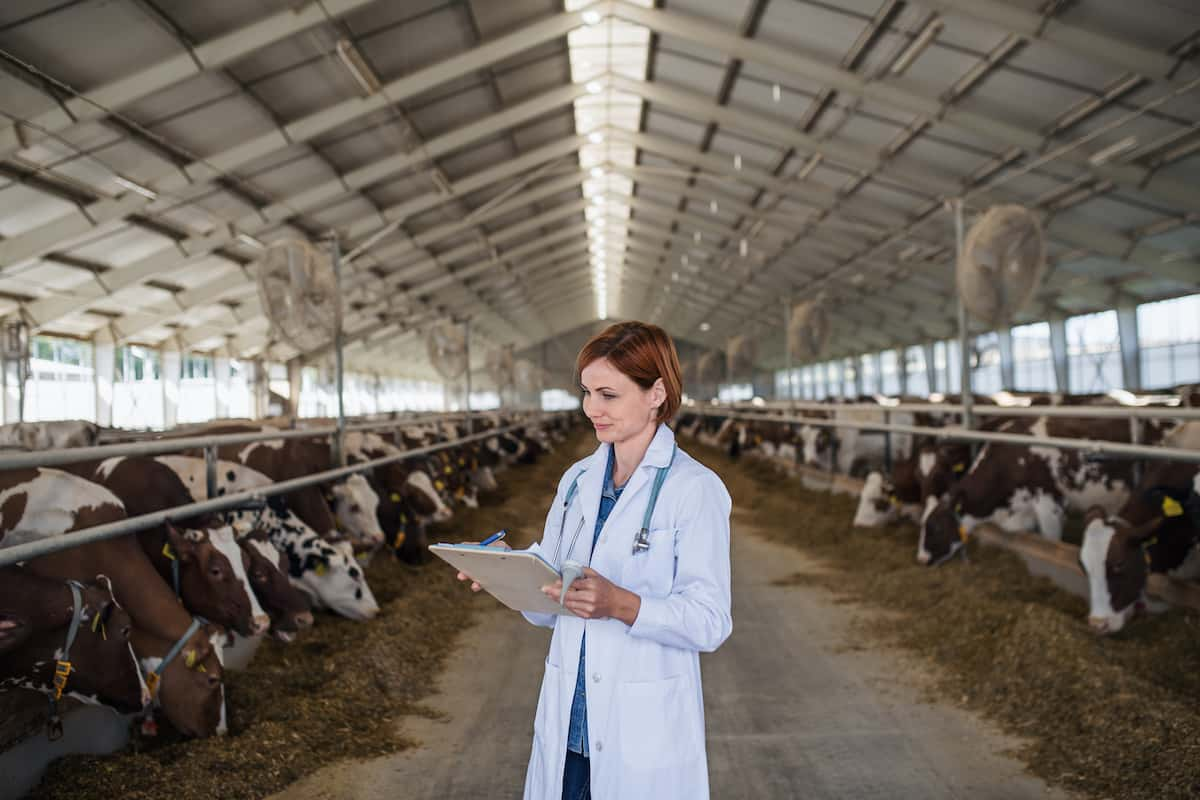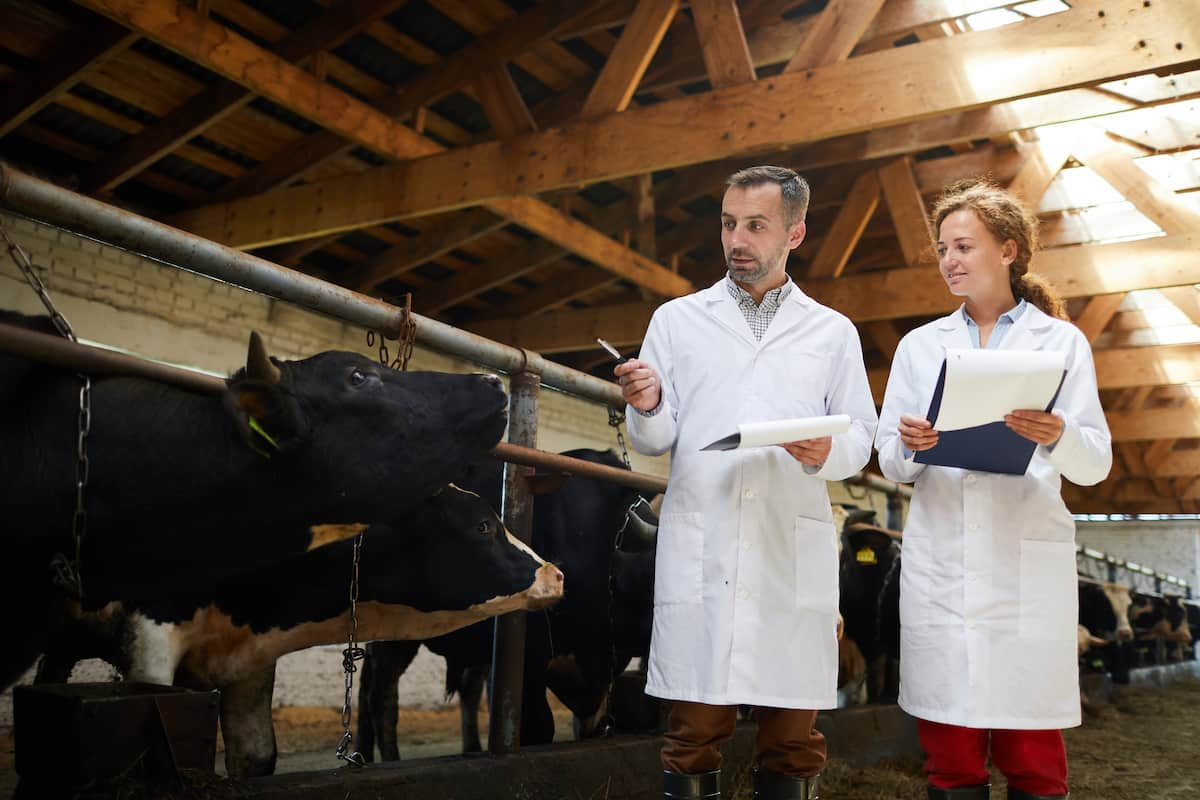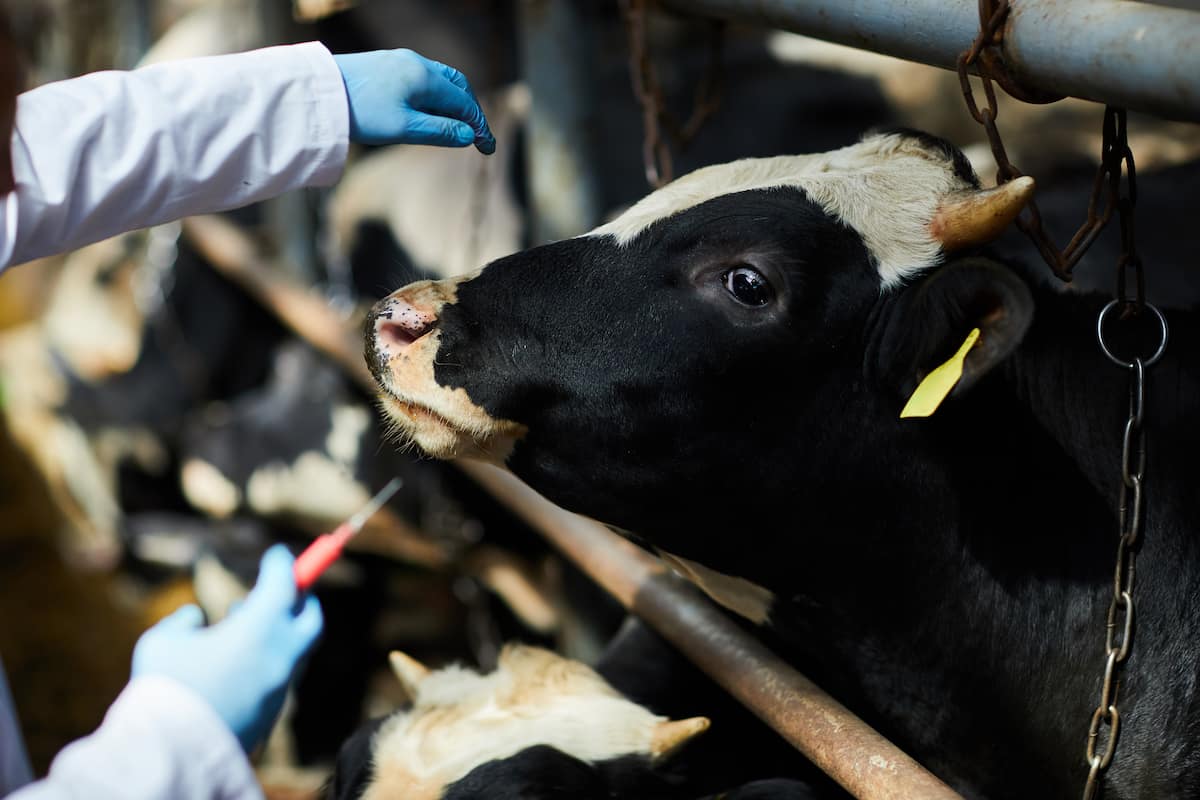Foot-and-mouth Disease (FMD) is a highly contagious virus that affects cloven-hoofed animals such as cattle, pigs, sheep, and goats. Fever, blisters, and vesicles in the mouth, teats, udder, and on the skin between the toes and above the hoofs are all symptoms. Harsh hair coats and malformed hooves frequently accompany recovery from the condition. In India, the Disease is prevalent and a major livestock industry concern.

The virus can spread through direct contact, contaminated water, manure, hay, and pastures, as well as through infected livestock handlers and carriers such as field rats, porcupines, and birds. It is also known to persist in recovered animals. To prevent the spread of FMD, it is important to maintain proper hygiene and biosecurity measures and promptly identify and isolate infected animals.
Foot and Mouth Disease Management in Cattle
Causes of Foot and Mouth Disease in Cattle
The foot-and-mouth disease virus causes foot-and-mouth Disease (FMD) in cattle (FMDV). The virus belongs to the Aphthovirus genus and the Picornaviridae family. It is very common and spreads quickly when sick animals come into close contact.
Disease Cycle of Foot and Mouth Disease
Direct contact with sick animals and their discharges or indirect contact with contaminated feed, water, or equipment, are all effective means of transmission. Droplets carried by the wind, contaminated clothes or shoes, or the movement of infected animals are all potential vectors for the spread of the virus. Clover-hoofed animal populations are more susceptible to this illness because they thrive in overcrowded, unclean environments.
What Are the Symptoms of Foot and Mouth Disease?
Foot and Mouth Disease (FMD) in cattle is characterized by various symptoms affecting infected animals’ mouths and feet. These symptoms include:
- Fever: The temperature of affected animals can rise to 104-105°F.
- Profuse salivation: The infected animals may drool excessively, resulting in ropes of stringy saliva hanging from their mouth.
- Vesicles: Vesicles or fluid-filled blisters may form in the mouth, nose, teats, and feet.
- Lameness: Affected animals may exhibit lameness, shaking, or kicking of the feet.
- Crossbred cattle are highly susceptible to FMD, and The condition begins with dullness, anorexia, and a decrease in milk output.
- Excessive salivation, serous nasal discharge, and vesicle formation are additional symptoms of the disease, which may also lead to abortion in pregnant cows and death in young calves.
- The course of an FMD infection typically lasts 2 to 3 weeks, although secondary infections can delay recovery.
In case you missed it: Coccidiosis Disease Management in Chicken: Symptoms, Treatment, Prevention and Management of Disease

Diagnosis of Foot and Mouth Disease
- Foot-and-Mouth Disease (FMD) diagnosis in animals is performed through laboratory tests, including RT-PCR assay, serology, or virus isolation. It is essential to confirm the diagnosis as the clinical signs of FMD are similar to other diseases.
- Tissue samples, such as vesicular epithelium or fluid, are collected for testing. Serologic tests determine past or present infections and certify animals for trade.
- Real-time RT-PCR assay is the most commonly used laboratory test for FMD. Antigen ELISAs and genome sequencing can also be performed for serotyping and determination of the strain.
- Serologic tests for antibodies to non-structural proteins are used to determine past or present infection. Still, they may result in false negatives in vaccinated animals.
- Working with a specialized laboratory that meets OIE requirements for Containment Group 4 pathogens is important.
Treatment and Control of Foot and Mouth Disease
There is presently no treatment for Foot-and-Mouth Disease (FMD) in animals. The focus is on preventing and controlling the virus’s spread. Control is undertaken in FMD-free areas by killing all diseased animals and limiting animal mobility. Vaccination is used in endemic regions to control disease transmission. Using external antiseptics can help heal ulcers and prevent fly infections. A 5:1 mixture of coal tar and copper sulfate is a cost-effective solution for dressing foot lesions.
Preventive and Foot and Mouth Disease Management in Cattle
- Preventive measures to manage Foot and Mouth Disease (FMD) in cattle should include regular protection of heavy milch animals and exotic breeds and two vaccinations with a six-month interval and annual boosters.
- Sick animals should be isolated and treated by a veterinarian. Animal sheds should be disinfected using bleaching powder or phenol.
- Attendants and equipment for sick animals should be separated and properly sanitized. Leftover feed and carcasses should be properly disposed of.
- Controlling fly populations is also important in preventing the spread of FMD. Following these guidelines allows FMD outbreaks to be effectively managed and prevented in cattle populations.
An ethnoveterinary prevention practice for Foot and Mouth Disease (FMD) involves grinding 100 g of tulasi (Ocimum sp) leaves, a pinch of salt, and 2 pieces of turmeric rhizome to obtain an extract, which is given orally to infected animals. The residue can then be used for smearing on the mouth and foot regions of the animal. This traditional method of preventing FMD outbreaks involves the use of locally available herbs and spices.
Vaccination Schedule for Foot and Mouth Disease in Cattle
| Disease | Age (months) | Interval | Month |
| FMD | 3 | Every 6 months | Jan-Feb, June-July |
Impact of Foot and Mouth Disease
Foot and Mouth Disease virus is infectious and spreads through the air, direct contact, diseased animals, contaminated farm equipment, and feed.
The symptoms include high fever, sores on the lips and feet, lack of appetite, weight loss, decreased milk supply, and mortality in young animals. Vaccination is the only approach to prevent FMD.
In case you missed it: Fowl Cholera Disease Management in Chicken: Symptoms, Treatment, Diagnosis and Prevention of Disease

The Disease can greatly impact India’s agriculture business, resulting in cattle losses, decreased milk production, and economic losses for farmers. To prevent the development of FMD and reduce its impact, proper measures such as immunization and cleanliness practices should be used.
Conclusion
Foot-and-mouth Disease (FMD) is a highly contagious virus affecting cloven-hoofed animals. Symptoms include fever and vesicles in the mouth and feet. The virus is spread through direct contact and respiratory secretions, among other means. The best method of prevention is vaccination.
In case of an outbreak, quarantine measures, culling infected animals, and proper hygiene protocols must be implemented. Effective management of FMD is important for maintaining cattle health and the agriculture industry’s economic stability. Proper vaccination and monitoring are crucial for preventing and managing FMD outbreaks in cattle.
- Types of Fungicides Used in Agriculture
- Common Issues in the Fruit Development Stage of Pomegranate Farming
- Fruit Development Issues in Papaya: Easy Solutions and Treatment
- Soil-Borne Diseases and How to Protect Your Plants
- Practices to Prevent Disease Spread in the Garden
- From Wilted to Thriving: How to Treat Root Rot Naturally in Houseplants
- Natural Remedies to Cure Brown Spots on Fig Tree Leaves
- Natural Solutions for Poinsettia Problems: 100% Effective Remedies
- How to Control Calla Lily Problems: Natural Remedies for Leaf and Flower Problems